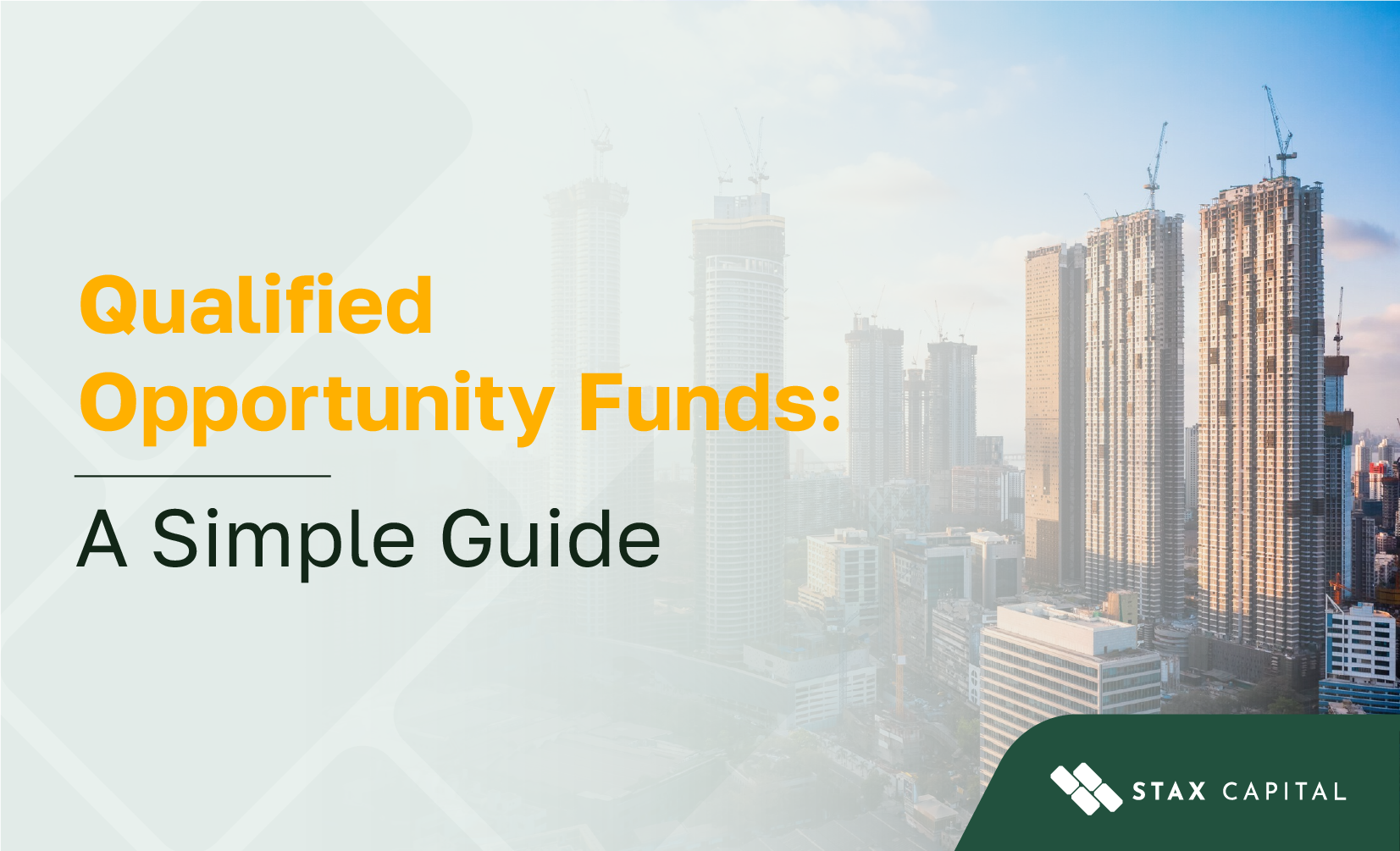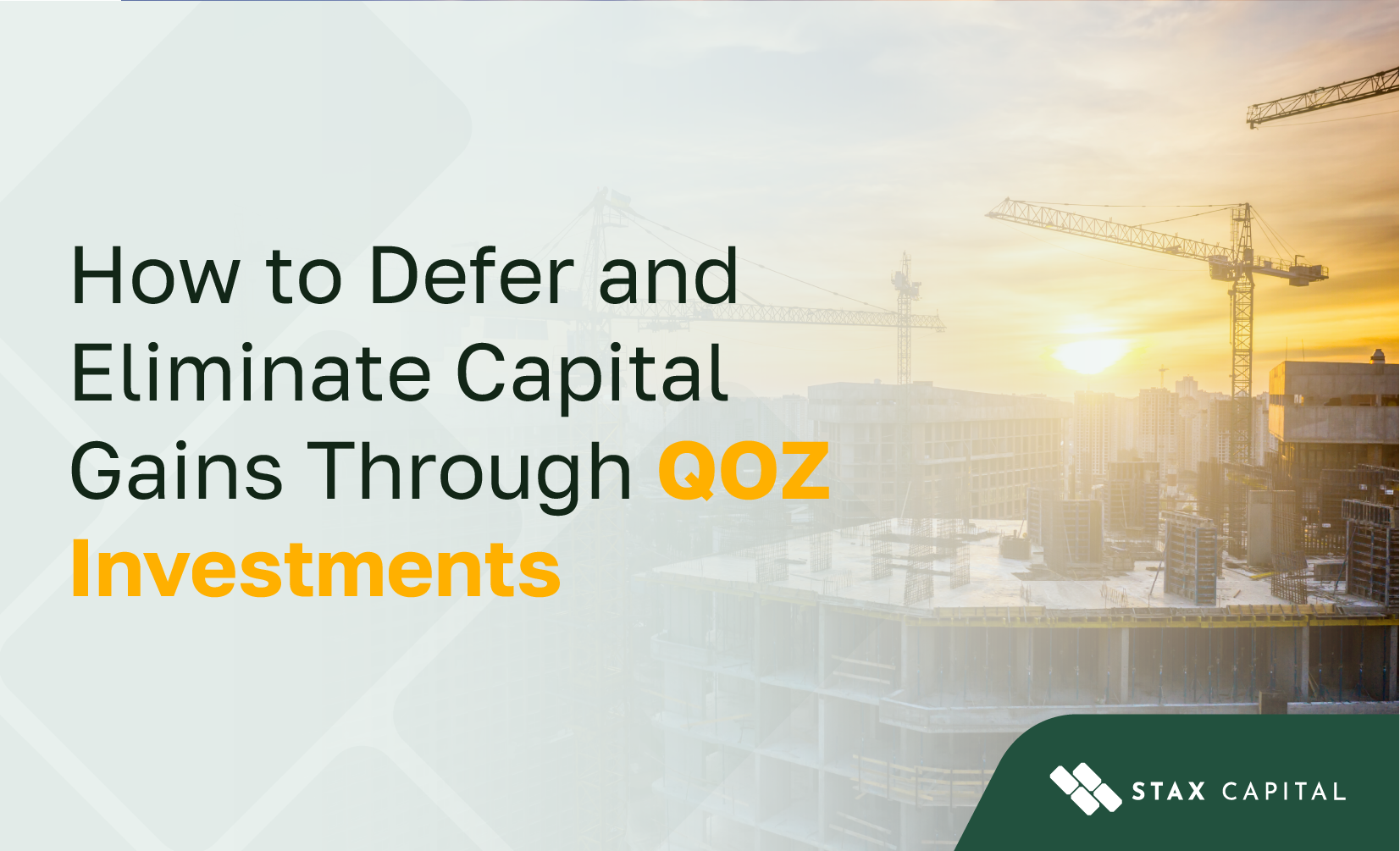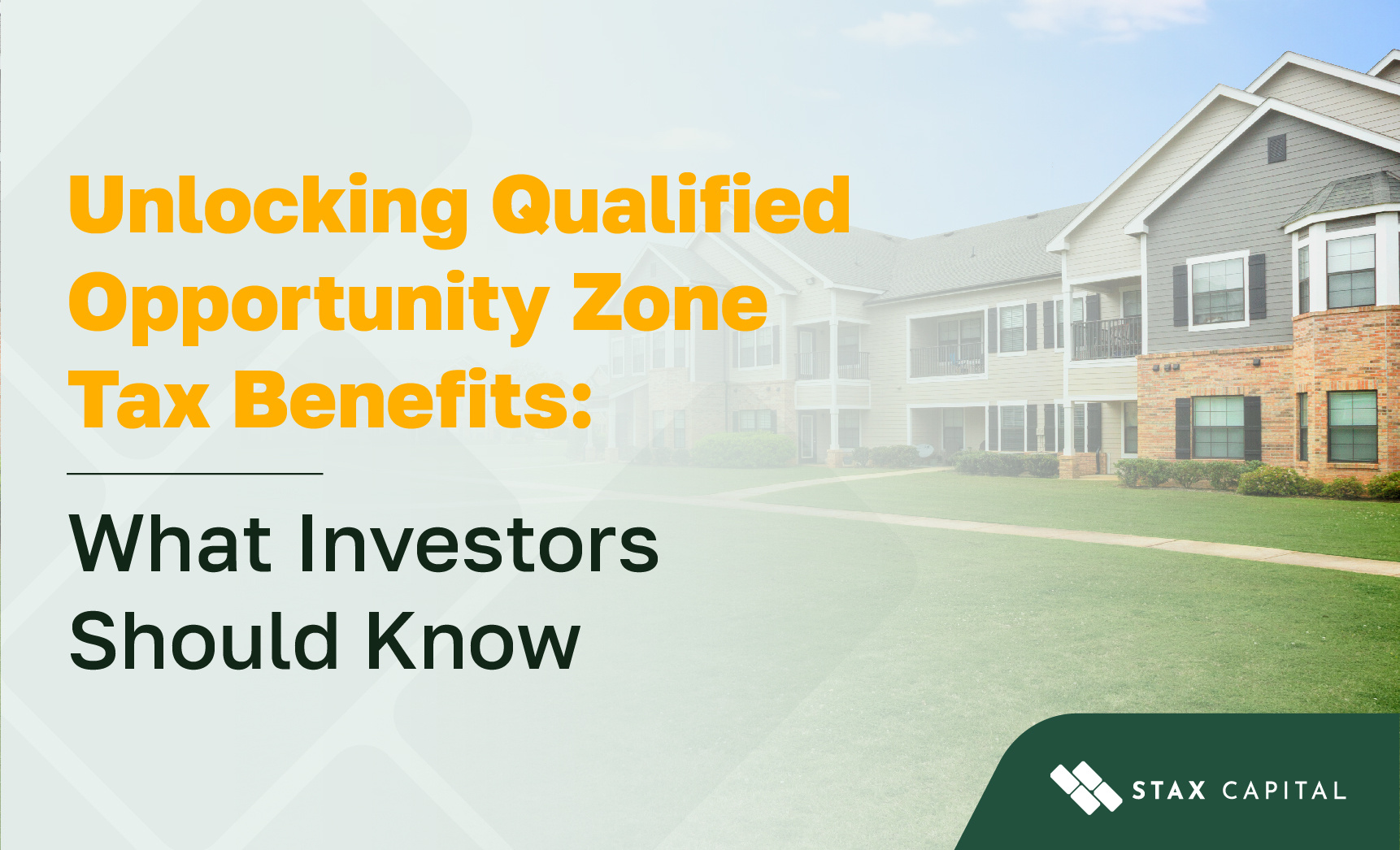Qualified Opportunity Funds (QOFs): 2021 Update

One year after a global lockdown triggered by the COVID-19 outbreak, the United States federal government has continued to be supportive towards stimulating the economy through aids for eligible businesses, schools and towards vaccine production and distribution. The pandemic has kept a lot of investors on their toes due to an increase in market volatility. Coupled with these happenings, there have been various speculations on the impact of the new Biden administration policies–– which officially began on January 20, 2020, on the economy.
If you invest in real estate through Qualified Opportunity Zone Funds (QOZF) or thinking to invest in Qualified Opportunity Funds (QOFs), you would most likely be concerned about how the recent economic situation would impact your returns, taxes and investment opportunities.
Basic Requirements for QOF investments
The 2017 Tax Cuts and Jobs Act (TCJA) provided an opportunity for investors to contribute towards developing economically distressed communities through Qualified Opportunity Zone (QOZ) investment opportunities. Generally, these communities are nominated by a state, the District of Columbia, or a U.S. territory. Some basic requirements for investments through qualified opportunity zone funds and qualified opportunity zone businesses are :
180-Day Investment Requirement for QOF Investors
This requirement mandates taxpayers to invest gains from property sale in a QOF within a 180-day window starting from the date of the sale or exchange in order to qualify for capital gains tax deferral provided that the gain does not exceed the aggregate amount invested by the taxpayer in the Qualified Opportunity Fund.
30-Month Substantial Improvement Period for QOFs
For a tangible property to qualify as an opportunity zone business property, it has to be used in a trade or business of the QOF and satisfy the substantial improvement requirement. This requirement provides that the original use of tangible property in the qualified opportunity zone acquired after 2017 must begin with the QOF or the QOF must substantially improve that property. Meeting the substantial improvement requirement is contingent on the additions to basis –– with respect to the qualified opportunity fund property –– held by the QOF during any 30-month period beginning after the date of acquisition, exceeding the adjusted basis of that property at any period starting from the 30-month substantial improvement period.
90-Percent Investment Standard for QOFs
A QOF as an investment vehicle could be a corporation or a partnership for the purpose of investing in qualified opportunity zone property and not another QOF. The ninety-percent investment standard requires a QOF to hold at least 90 percent of its assets in qualified opportunity zone property.
The average percentages of the QOF’s qualified opportunity zone property on the semi-annual testing dates must equal at least 90 percent of the QOF’s assets. If a QOF fails to meet this requirement and the average of the percentages of its qualified opportunity zone property on the testing dates does not equal at least 90 percent of the QOF’s assets, they would be subject to a penalty for each month it fails the requirement. If the failure is due to a reasonable cause, the penalty may not be imposed.
Working Capital Safe Harbor for Qualified Opportunity Zone Businesses
For Qualified Opportunity Zone Businesses (QOZB), there is a requirement to have less than five percent of the average of the properties aggregate unadjusted bases attributable to non-qualified financial property excluding some certain working capital assets such as cash and cash equivalents from non-qualified financial property or reasonable amounts of working capital that are held in cash, cash equivalents, or debt instruments with a term of 18 months or less.
A working capital safe harbor was provided for QOZBs to allow for treating certain amounts of working capital as reasonable provided certain requirements are met. Through a written schedule, a QOZB can be allowed to utilize the expenditure of the working capital assets within 31 months of receiving the assets.
However, the working capital safe harbor period can be extended to a maximum 62-month period for certain reasons such as, if the qualified opportunity zone business is in a qualified opportunity zone within a federally declared disaster. Then, the qualified opportunity zone business may have additional time to a maximum of 24 months to use its working capital assets, subject to meeting the working capital safe harbor requirements. Given this, a qualified opportunity zone business located in a qualified opportunity zone, within a federally declared disaster, may have up to a maximum 86-months to expend reasonable working capital assets.
12-Month Reinvestment Period for QOFs
Selling off or disposing some or all of the qualified opportunity zone property in a QOF would result in proceeds or possible capital gains. If some or all of the proceeds in qualified opportunity zone property is invested by the QOF by the last day of the 12-month period from the date of the sale, or disposition, the reinvested proceeds can be treated as qualified opportunity zone property towards fulfilling the ninety-percent investment standard. This also applies if there is a distribution of the QOF’s qualified opportunity zone stock that qualifies as a return of capital.
However, there are requirements that need to be met for this treatment to be applicable in QOFs. The period before the proceeds from the sale, disposition or distribution is reinvested in qualified opportunity zone property, they have to be continuously held in cash, cash equivalents, or debt instruments with a term of 18 months or less. If any reinvestment plans in a qualified opportunity zone property is delayed as a result of a federally declared disaster, the QOF may get additional time up to a maximum of 12 months to reinvest the proceeds, subject to the QOF sticking to the original investment plan.
What’s new for investments in Qualified Opportunity Funds and Qualified Opportunity Zone Businesses
In response to the difficulties faced by many investors, the Internal Revenue Service (IRS) released the Notice 2021-10 on January 20, 2021. This release extended the relief for QOFs and their investors initially provided by Notice 2020-39 and also provided additional relief to help navigate around the requirements for the QOFs. The relief extensions are automatic and investors are not required to process any documentation.
180-Day Investment Requirement for QOFs
The released Notice 2021-10 provided an extension for the 180-day investment window for QOF investors until March 31, 2021. This enabled investors who had the last day of the 180-day window to invest their eligible gains from sale proceeds fall between any time from April 1, 2020, through March 31, 2021 have the opportunity to still invest in QOFs. Although this relief is automatic, as an investor in QOFs, you will be expected to make a valid deferral election on your federal income tax return –– including extensions, for the applicable tax year that the gain is expected to be recognized.
30-Month Substantial Improvement Period for QOFs and Qualified Opportunity Zone Businesses
As regards the 30-month substantial improvement period, If you hold a QOF property or qualified opportunity zone business property, the Notice 2021-10 relief allows that the period from April 1, 2020, and March 31, 2021 be disregarded in determining any 30-month substantial improvement period.
With the substantial improvement requirement, investors in QOFs are required to make improvements on a QOF property that increase their adjusted tax basis in the improved property within a 30-month window. The Notice 2021-10 relief essentially provides more time for investors to improve their QOF property and qualify for possible tax benefits.
90-Percent Investment Standard for QOFs
Under Notice 2021-10, if an investment in QOF has the last day of the first six-month period of a taxable year or the last day of a taxable year fall between the period of April 1, 2020, and June 30, 2021, failure by the QOF to satisfy the ninety-percent investment requirement for the applicable tax year is considered to be from a reasonable cause. This relief is also automatic and requires that the QOF fill all lines on Form 8996 completely with respect to each affected taxable year. The completed Form 8996 would need to be filed with the federal income tax return (including extensions) for the affected taxable year(s).
Working Capital Safe Harbor for Qualified Opportunity Zone Businesses
The Notice 2021-10 relief provides that Qualified Opportunity Zone Businesses with working capital assets that are planned to be covered by the working capital safe harbor before June 30, 2021, receive not more than an additional 24 months. This extension includes any relief provided under the previously provided relief in Notice 2020-39 and allows for a maximum safe harbor period up to 55 months and in the case of start-up businesses, up to 86 months subject to the requirements of the working capital safe harbor.
12-Month Reinvestment Period for QOFs
Following the existing 12-month reinvestment period requirement, if your investment in qualified opportunity funds has a 12-month reinvestment period that includes June 30, 2020, your QOFs would receive not more than an additional 12 months (including any relief provided under Notice 2020-39). This essentially means a combined maximum reinvestment period of not more than 24 months to reinvest some or all of the proceeds received by the QOF either in the form of a return of capital or the sale or disposition of some or all of any qualified opportunity zone property, in qualified opportunity zone property. The condition that the QOF invests the proceeds in the manner originally intended before June 30, 2020 still applies.
In conclusion
These changes and updates for investments in QOFs may seem like a lot to process and implement, therefore it is advisable to employ the services of professional tax experts and accountants to provide clarity and more information that make it possible to maximize any potential tax benefits and opportunities.
Contact the Stax Capital team for more information on investments in qualified opportunity zone funds and businesses.



Share: